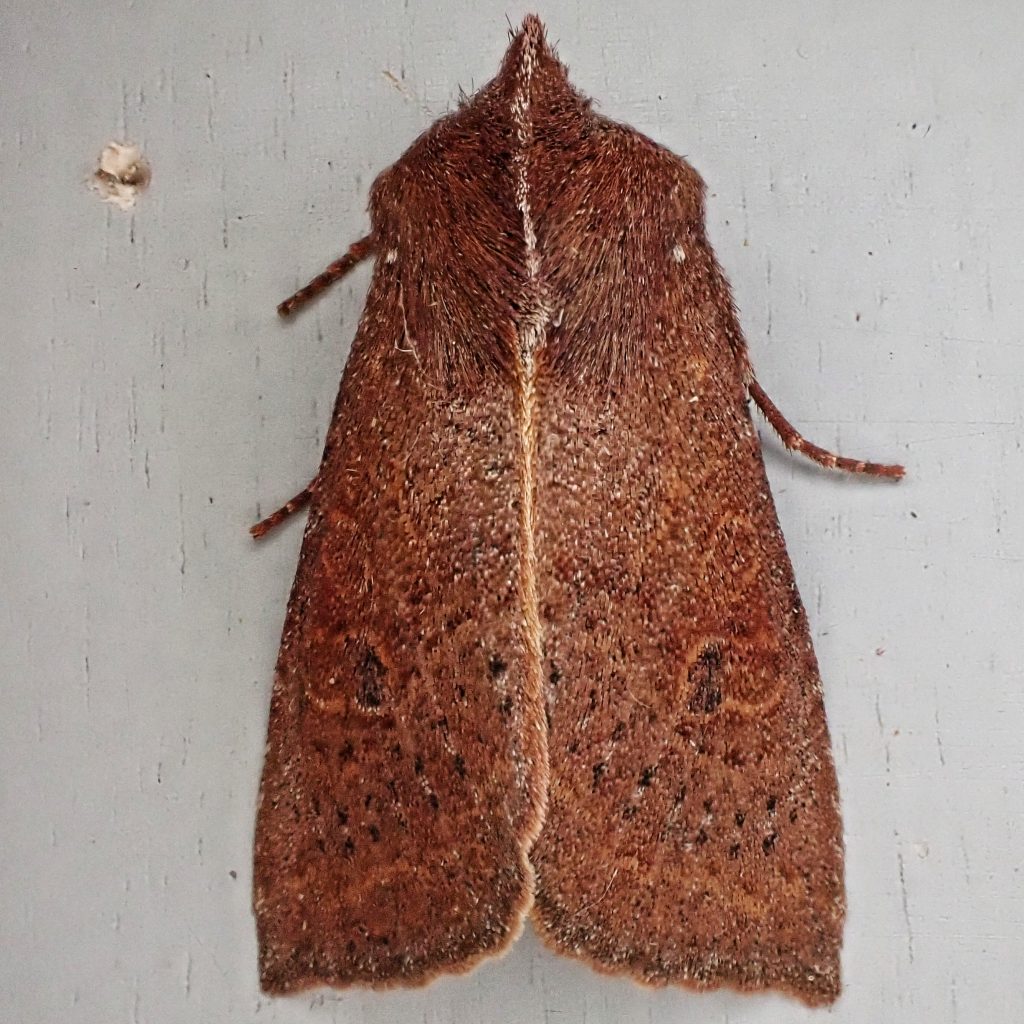
This handsome Noctuid moth is coming soon to a light source near you. Orthosia transparens is a very early flier and will probably be out and about sometime this month. Most, if not all, Orthosia are early spring fliers who overwinter as pupa. They emerge early to mate and lay eggs, so that their larvae can feast on the new spring growth of their hosts, which in the case of the Transparent Quaker Moth means rhododendron, salal, and madrone, as well as a few other evergreen Ericaceae.
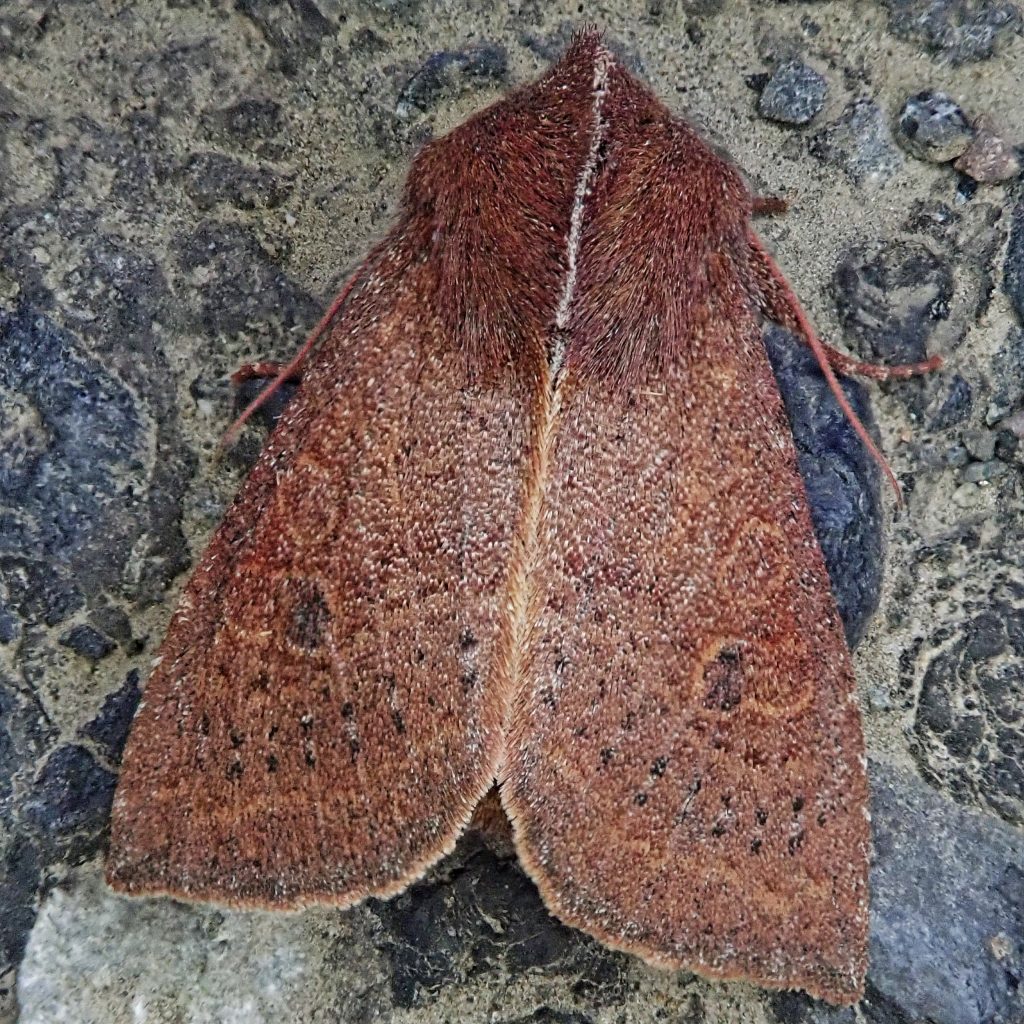
This can be a very common moth in some of the conifer forests where I run lights, if they have a heavy salal understory. Its numbers can even rival Orthosia hibisci in some areas. Seeing so many of them I learned to differentiate them fairly quickly, although one of my prime identification marks is not listed by any of my resources. The first thing you see is the brick red wings, and the hairy thorax that is just a couple shades darker. Then you can see a lighter line that runs right down the thorax and through the area where the wings meet in a tent, a trait I’ve never seen mentioned. In the spotlight of a headlamp this is visible from 10’ away, and I don’t remember ever being fooled, which is not something I can say about very many moth species.
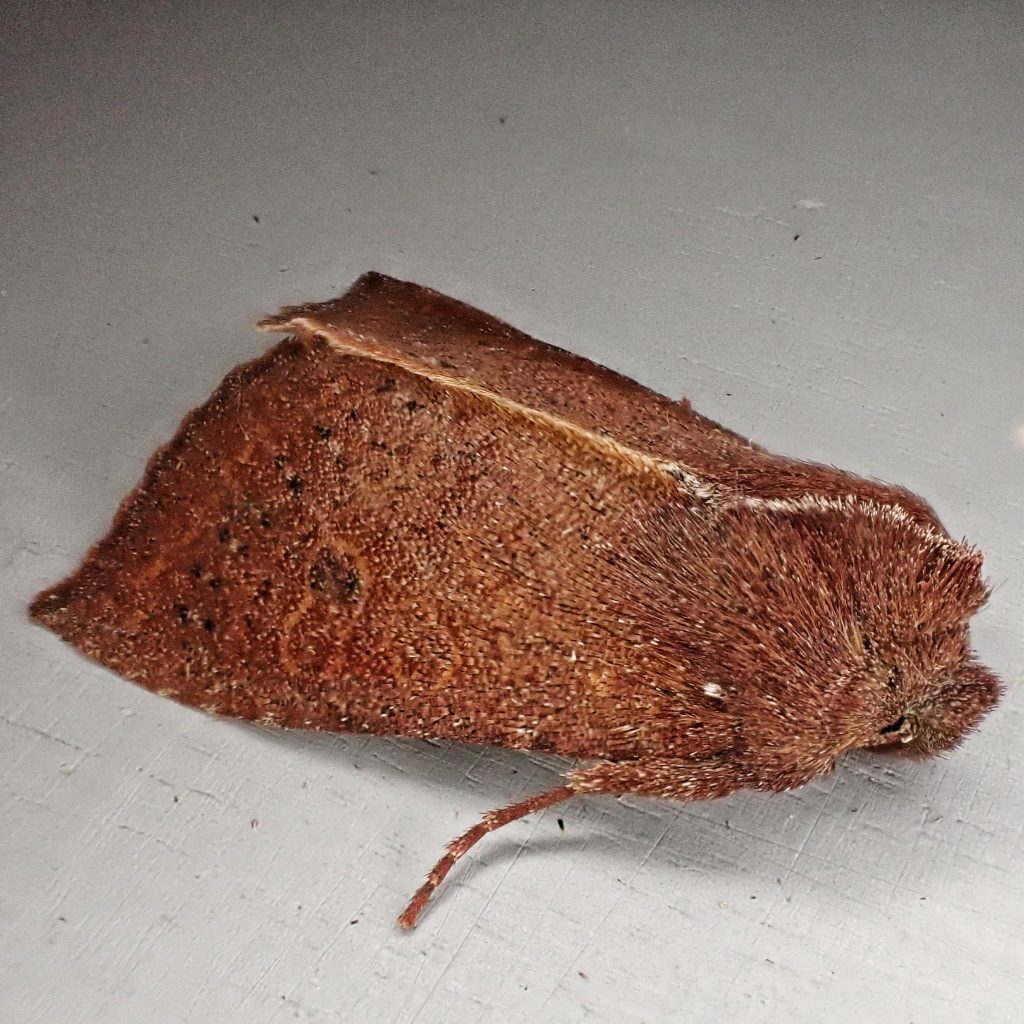
Description-Medium sized (15-17mm), brick red to dark reddish brown moth; transverse lines consist of dark grey dots at the veins; orbicular spot indistinct because it is filled with ground color, and only the inner half of the reniform spot is filled with dark grey; the thorax has a crest with a small tuft; hindwing is reddish grey.
Similar species-Dark forms of Orthosia pulchella have orbicular and reniform spots filled with dark grey; dark forms of Orthosia praeses have a light brown collar; Orthosia mys flies in the fall; Sideridis maryx has almost no markings on its forewings and flies later in the year
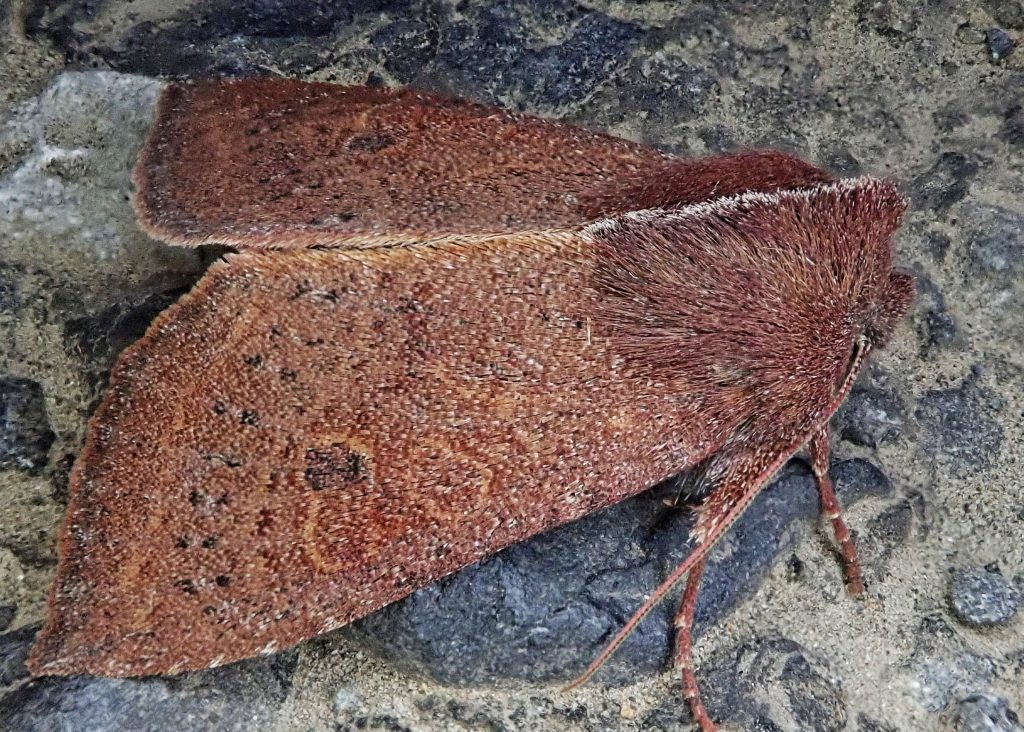
Habitat-Moist to mesic forests with their host plants
Range-West Coast endemic; in our region it is found west of the crest of the Cascades, in the Siskiyous, and in sw Oregon and nw California.
Eats-Larval hosts are rhododendron, madrone, salal, and some other evergreen Ericaceae.
Eaten by-Probably insectivores of all classes
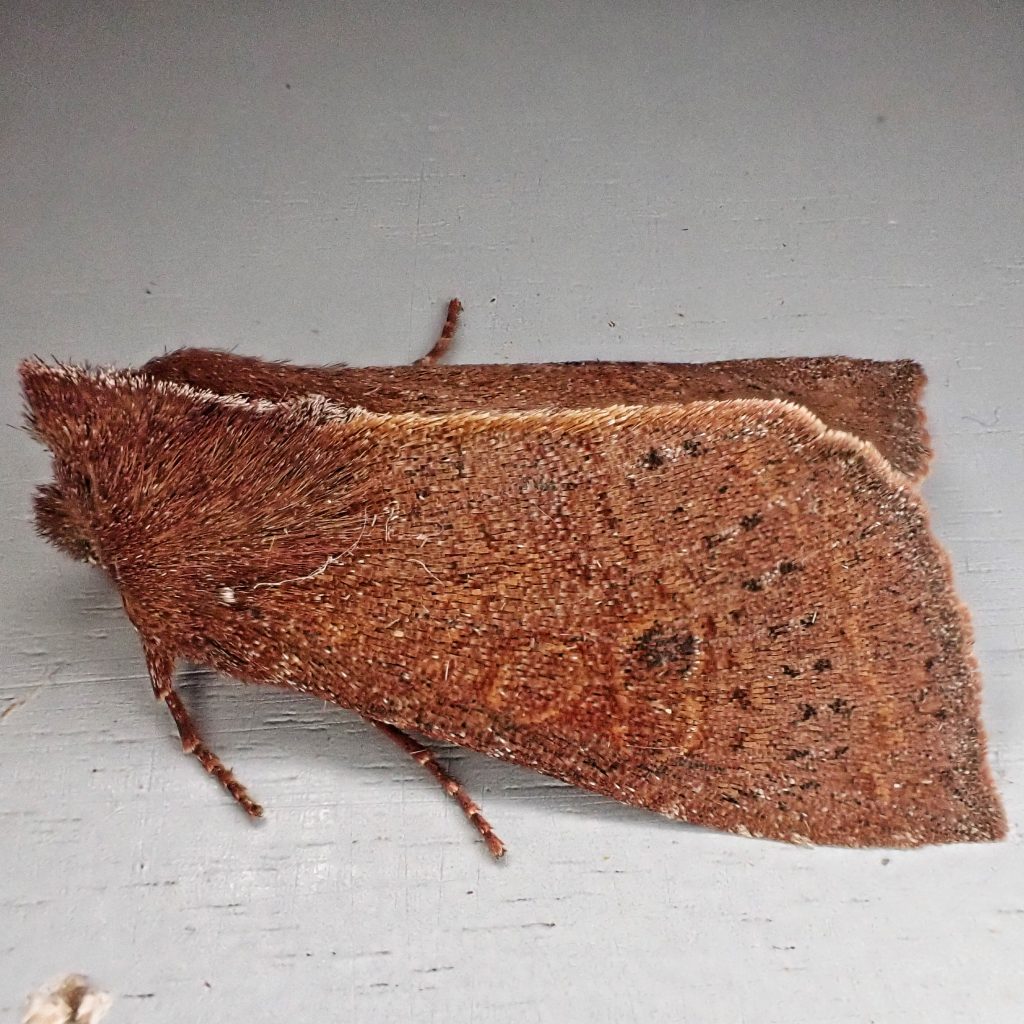
Adults active-Nocturnal; February through May.
Life cycle-Adults emerge in the spring and breed soon after; larvae feed on new growth and pupate in mid summer; overwinter as pupae in diapause, and emerge in the spring as adults.
Etymology of names–Orthosia is from the Greek for ‘making straight’, referring to the straight subterminal line in this genus, and also celebrates the goddess Diana in Greek mythology, who was called Diana Orthosia by the Byzantines. The specific epithet transparens is from the Latin for transparent, but I cannot ascertain what transparency AB Grote was referring to.
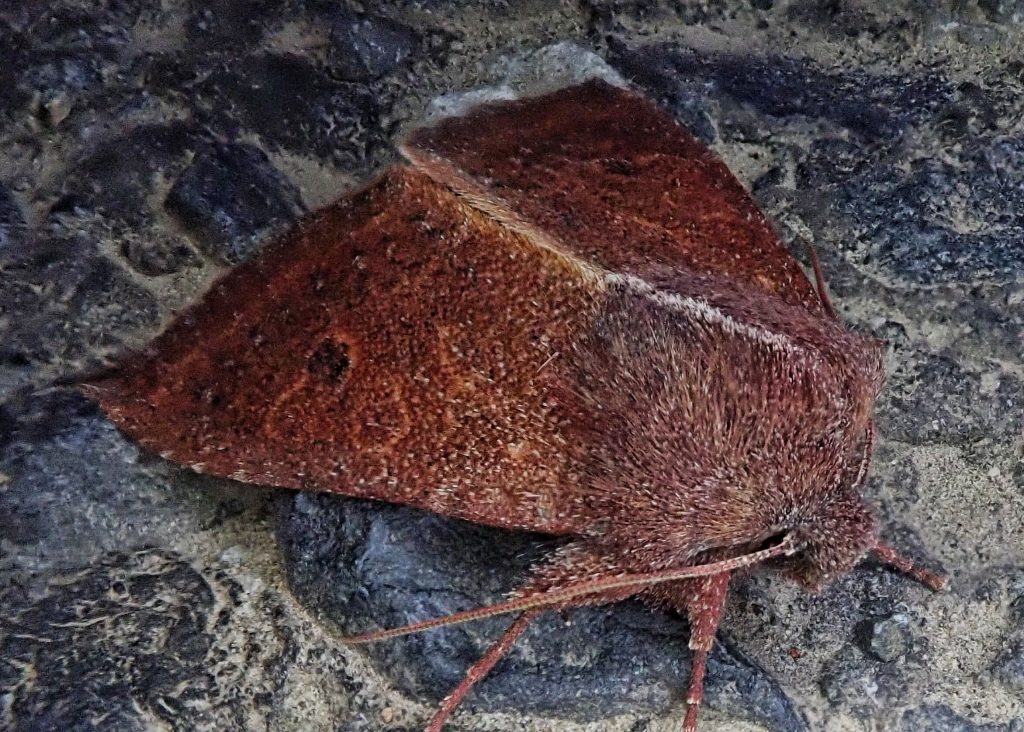
https://bugguide.net/node/view/42374
http://mothphotographersgroup.msstate.edu/species.php?hodges=10479
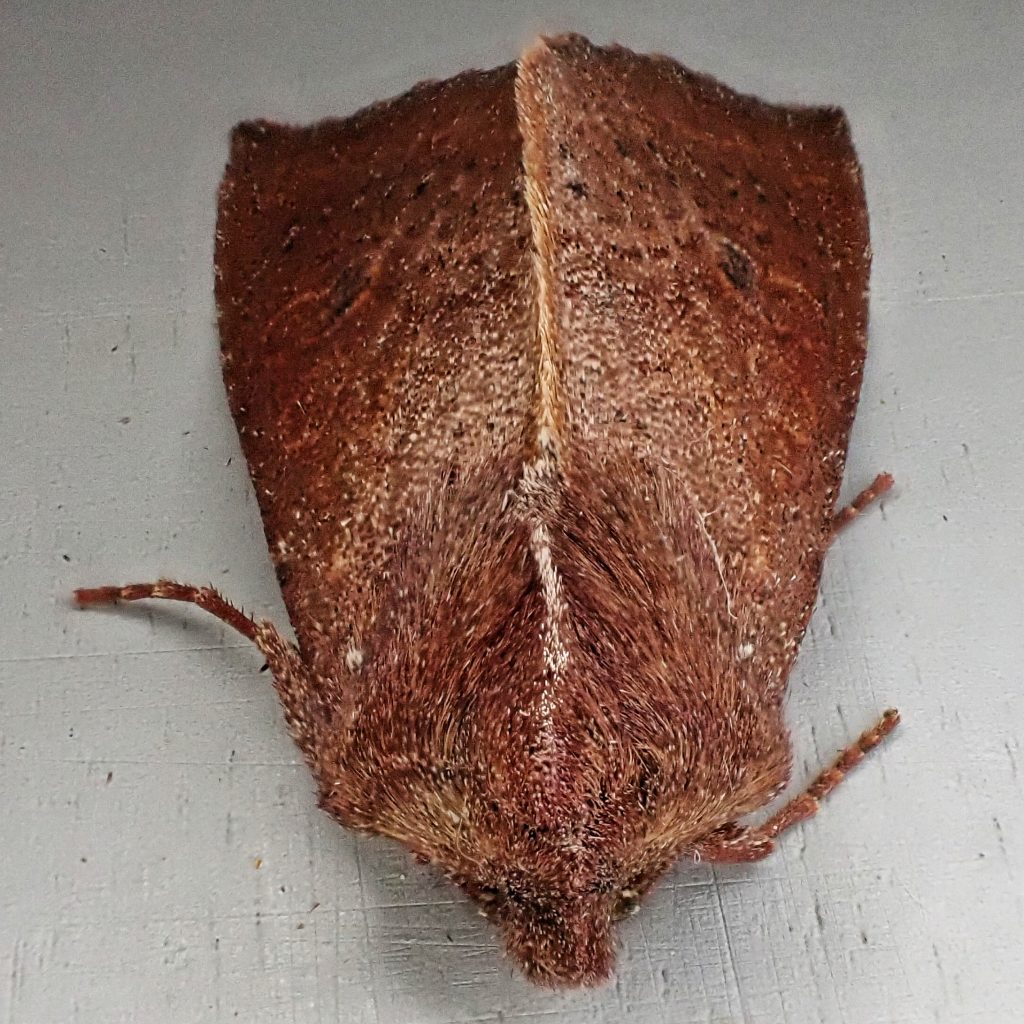
3 thoughts on “Orthosia transparens (Transparent Quaker Moth)”